The 5 Best Companion Plants For Peppers
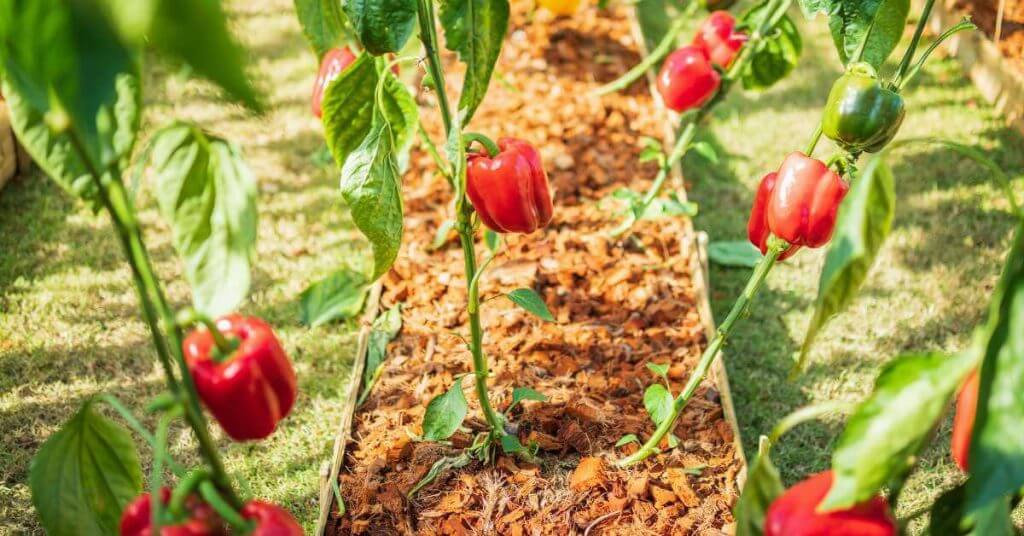
Jump to:
While they might seem like just another common vegetable, peppers are as interesting as they are tasty.
Technically, they are not vegetables; botanically speaking, peppers are fruits because they contain seeds and come from the flowering part of plants.
Peppers are also believed to be one of the oldest cultivated crops, having been part of the human diet since around 7500 BC.
For gardening enthusiasts, both beginners and pros, peppers form one of the fundamentals of most gardens as they are relatively easy to grow, have high yields, and are delicious.
But like all plants, they work best as part of a team. This article will overview five of the best companion plants for peppers, selected for their abilities to prevent damaging pests, attract crucial pollinators, increase fruit set and yield while adding a splash of color and visual appeal to make your plot as beautiful as it is productive.
The Best Companion Plants For Peppers
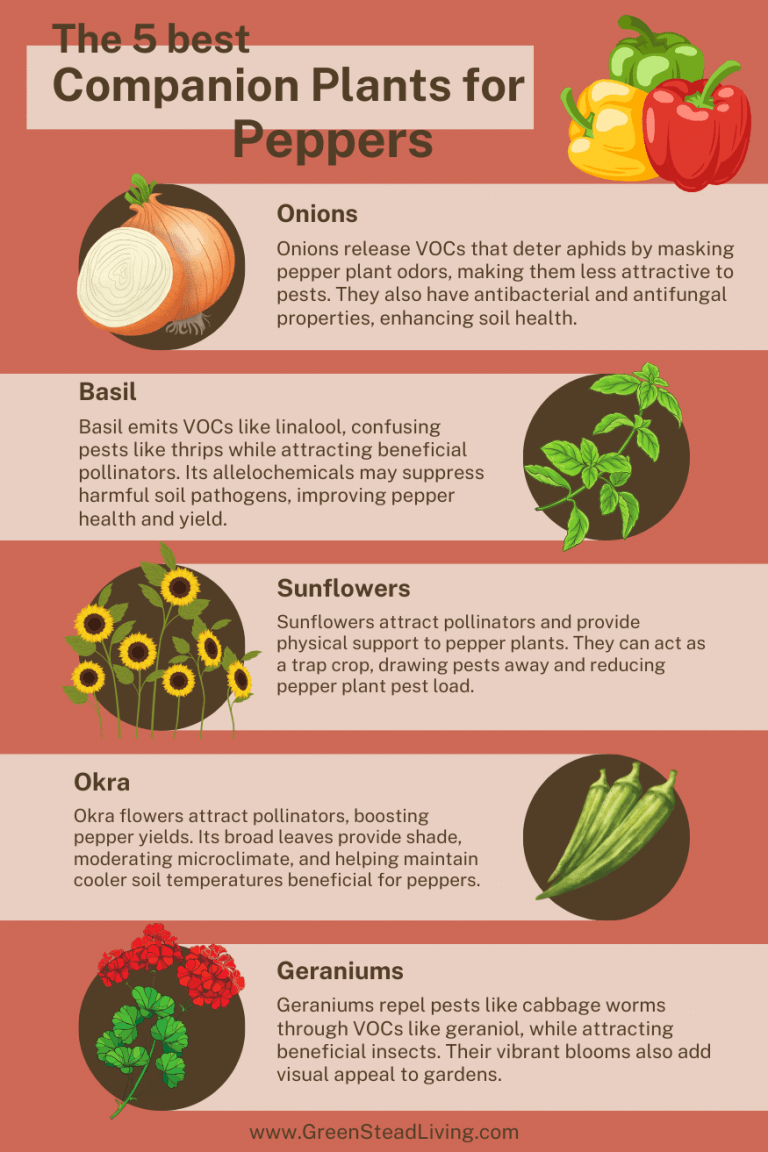
1) Onions
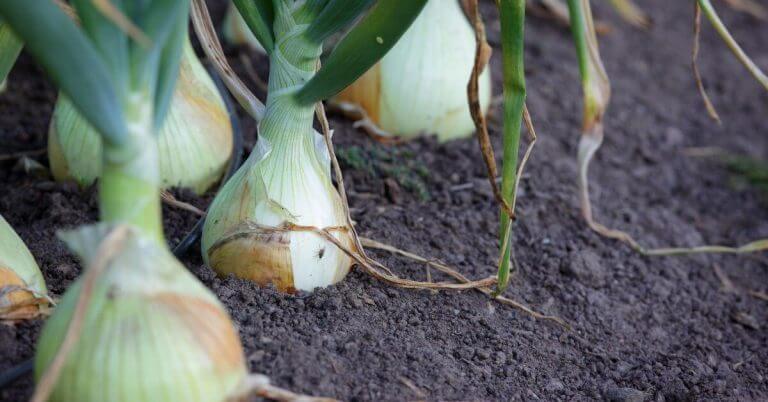
Onions are known for their strong scent and their ability to bring even the toughest to literal tears. This scent is the result of onions releasing volatile organic compounds (VOCs), organic chemicals that have a high vapor pressure at ordinary room temperature, which interfere with the olfactory cues (sense of smell) that pests use to locate their host plants.
Studies have shown that sulfur compounds can deter aphids, which are among the most common pests affecting peppers. Aphids rely heavily on smell to find their feeding sites, and the strong scents from onions can mask the odor cues emitted by pepper plants, making them less attractive to these pests.
The roots of onions also secrete certain substances that are known to have antibacterial and antifungal properties, a natural method of building a healthier soil environment for your peppers by suppressing certain soil-borne pathogens that might otherwise harm them.
Onions are a great companion for peppers because their fibrous and relatively shallow root system does not interfere with the deeper roots of pepper plants, meaning little competition for precious nutrients and water.
Make sure you plant your onions about 4 to 6 inches apart, and space your peppers about 18 to 24 inches apart, ensuring both have enough room to grow without overcrowding. Both onions and peppers thrive in well-draining soil rich in organic matter, so before planting, enhance your soil with compost or well-rotted manure to improve fertility and drainage.
2) Basil
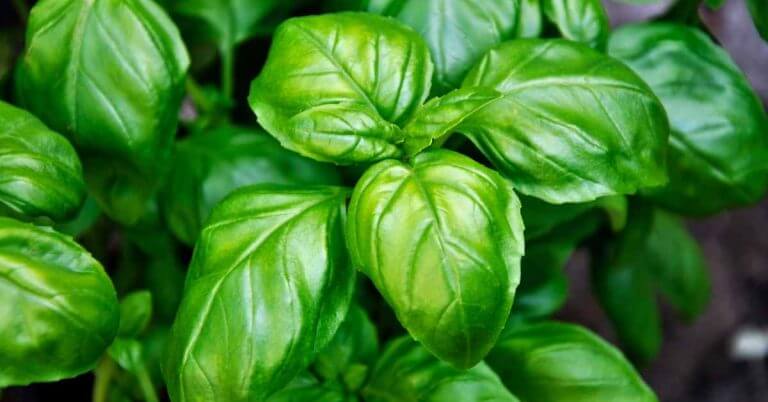
Basil is known and loved for its distinct and pleasant aroma that is both sweet and slightly spicy, the result of VOCs such as linalool, eugenol, and various other terpenes.
While most of us love the smell of basil, it confuses the olfactory cues of various pests that might otherwise target your beloved peppers, specifically thrips, which suck the sap from peppers and transmit viruses while doing so.
Despite being a turn-off for thrips and other pests, basil flowers are highly attractive to pollinators such as bees and butterflies. Increased pollinators in your garden indirectly benefit your peppers through increased fruit set (and thus increased yield) of the pepper flowers.
Some studies suggest that, like onions, basil may release allelochemicals, natural chemicals produced by plants that affect the development of other organisms in their vicinity, specifically harmful soil pathogens and nematodes that have claimed many pepper victims.
In fact, the allelopathic relationship between basil and tomatoes was found to lead to more tomatoes being produced, faster germination time, and more massive roots in this five-month study, resulting in the same plant height, plant biomass, root length, and growth rate as commercial fertilizers. Since peppers are part of the same family as tomatoes, there is no reason to believe basil would not have the same effect.
Basil is also a great companion plant for many other vegetables, specifically tomatoes and cucumbers, and above all, is extremely tasty and should be a staple of most gardens.
Avoid buying your basil from a supermarket, as these plants are grown in the bare minimum soil requirements and are kept alive under perfect greenhouse conditions. Once moved to the real world, they often quickly die.
3) Sunflowers
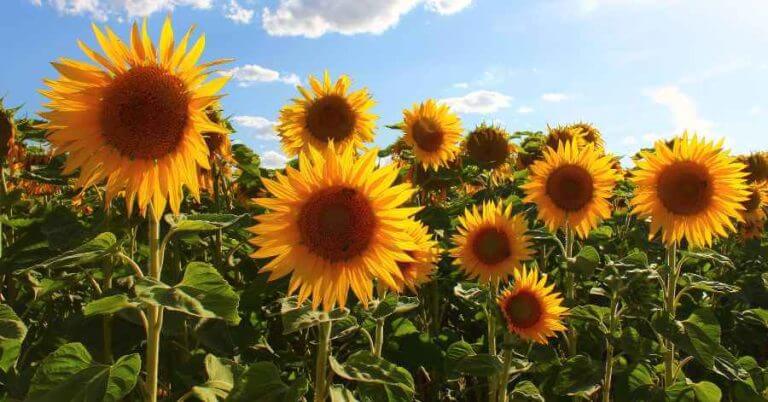
Amongst all the greens and browns from vegetable patches, sunflowers add a much-needed bit of color and pizazz to otherwise mundane plots. But their benefits extend far beyond the aesthetic.
Firstly, sunflowers are as attractive to pollinators as they are to the human eye, especially for bees and butterflies. The increased pollinator activity from sunflowers will have a beneficial spillover effect on many of your nearby plants, especially peppers, which require lots of pollination for fruit set.
Secondly, sunflowers, with their tall and sturdy stalks, can provide physical support to pepper plants, which like to climb and are susceptible to wind damage. If your garden plot is exposed to potential winds, sunflowers are one of the best hedges (pardon the pun) against wind damage. They can also serve as a natural trellis for some types of climbing pepper plants.
In addition to physical support, sunflowers can act as a trap crop, sacrificing themselves by attracting pests away from your more valuable crops, like peppers. In particular, sunflowers attract aphids and their predators, such as ladybugs and lacewings. By drawing these pests towards themselves, sunflowers can reduce the pest load on pepper plants, a diversionary tactic that plays a key element in integrated pest management.
As a taller and generally larger plant, sunflowers will need a little more space than most, so planting between 12 and 24 inches away from other plants is recommended, especially to avoid blocking sunlight to plants that need it.
While sunflowers are not particularly fussy about soil pH, ensure they have plenty of water, especially when young and during dry spells. As the name implies, sunflowers need plenty of sun, at least 6-8 hours a day, so ensure they are planted where they can access this.
4) Okra
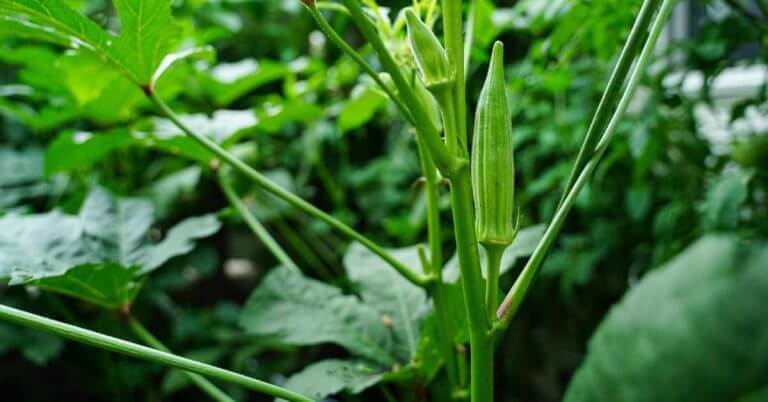
It took me a while to experiment with okra; they are slimy and the taste, while not offensive, is a pretty generic green vegetable taste. But they are a fast-producing vegetable and taste excellent when picked, fried, or roasted.
If you’ve never considered okra, it is well worth the effort required to make them taste good, as they have many companion benefits for other plants, such as peppers.
Okra plants produce large and attractive flowers that are highly appealing to useful pollinators, helping to increase the fruit set and yield of your pepper plants.
The broad leaves of the okra plant can help to moderate the microclimate around heat-sensitive plants like peppers, acting as a buffer in hot climates or during the hot summer months. By providing intermittent shade, okra can help maintain a cooler root environment, limiting damage by direct heat while also helping to keep the soil moist.
The nutrient needs of okra and peppers are somewhat complementary, making them good candidates for growing in proximity. Both require phosphorus, potassium, and nitrogen, so applying a fertilizer can generally meet the needs of both if balanced correctly.
A quick okra tip that I was once told that effectively doubled my yield: when you cut off a piece of okra, cut off its corresponding leaf (every okra has a leaf with it). This “priming” allows the plant to put more energy into growing vertically, and it will produce more fruit. Make sure you harvest the pods when they are about finger size – if they get any larger, they tend to taste woody and are unappetizing.
5) Geraniums
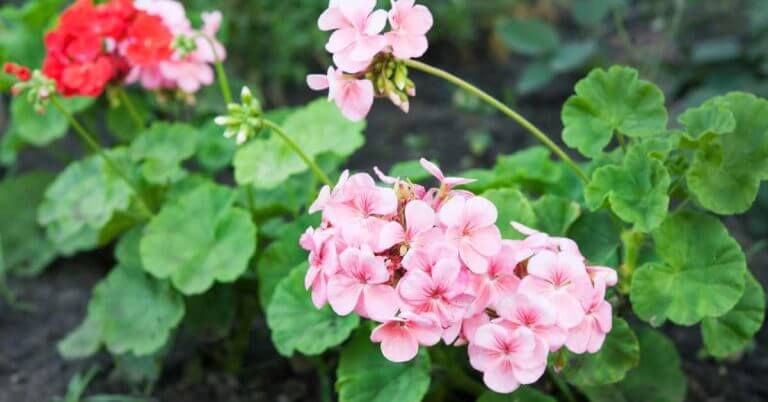
Geraniums, a popular and colorful flowering plant known for their bright, long-lasting blooms, make a great companion plant for pretty much anything. While I like to maximize the amount of vegetables I grow in my limited plot size, planting smaller flowering plants like the beloved geraniums is well worth the small space sacrifice.
These small miracle plants are particularly known for their ability to repel various pests through the production of certain VOCs like geraniol and citronellol, which are also responsible for giving geraniums their wonderfully distinctive fragrance.
These chemicals are also excellent at deterring pests, especially cabbage worms and leafhoppers, which are known to damage pepper plants by eating their leaves and spreading disease. Geraniums can mask the scent of pepper plants, making it harder for pests to locate them.
While repelling harmful pests, geraniums also attract beneficial insects. For example, they can lure predatory insects like ladybugs and lacewings, which consume aphids, mites, and other damaging pests.
Geraniums come in all manner of shapes and colors, adding a nice bit of visual appeal to your garden.
Honorable Mentions
If these five companion plants for peppers don’t fit your needs and wants, here are some honorable mentions that may prove just as beneficial for your peppers.
Spinach should form one of the key crops for any vegetable patch, being a fast-growing, hardy, and nutritious crop. It also provides valuable ground cover for peppers, keeping the soil moist and cool while avoiding burnout in the hotter months or climates.
Another staple, carrots, can help loosen the soil around the deeper-growing pepper plants, improving soil aeration and drainage. Avoid planting too close together, though – 12 inches should be fine.
Herbs such as oregano, clover, and parsley are all reportedly suitable companion plants for peppers, likely due to their strong scents and high VOC content facilitating strong pest deterrent properties.
What Plants Should You Not Plant Next to Peppers?
Tomatoes?
Tomatoes and peppers cause a lot of controversy when it comes to companion planting; some lists place it as a clear avoid while others claim they grow both together perfectly fine.
The truth is that tomatoes and peppers both belong to the Solanaceae, commonly referred to as the nightshade family, and thus share similar growing requirements, are both deeper rooted, and have the potential to suffer from the same blights and diseases.
As a result, tomatoes and peppers are not considered suitable companion plants. Does this mean tomatoes and peppers cannot be successfully grown in proximity? Absolutely not. Just ensure there is sufficient space between both, consider using an appropriate fertilizer that will mitigate nutrient competition, and use some pest deterrent plants such as basil or marigolds to help offset the risk of pest attacks.
Potatoes
Like tomatoes, potatoes and peppers are in the same family and can spread diseases to each other, by leaf and by root, so it is best not to plant them close together and are thus not considered companions. Potatoes are also extremely heavy feeders with their large root system, so it can be challenging to provide enough space for both plants to thrive.
Also, avoid planting potatoes and peppers in the same place year after year to mitigate the risk of root diseases.
Brassicas (Kale, Cabbage, Brussels Sprouts)
Both brassicas and peppers are relatively heavy feeders, particularly when it comes to their need for nitrogen, which might lead to nutrient competition if grown too close together.
Peppers also require well-drained soil and might not tolerate the more moist conditions that brassicas generally prefer.
To successfully grow brassicas in your garden, ensure you leave enough space between peppers and other large rooted plants such as tomatoes and potatoes.
Final Thoughts
Peppers are an excellent beginner-friendly vegetable that will remain a fundamental crop in your vegetable plot for years to come. Aiding their development with the right companion plants is therefore crucial for their prosperity.
Onions, basil, sunflowers, okra, and geraniums will offer a comprehensive range of benefits that will avoid pests, attract pollinators, provide shade, and act as physical support for your peppers to flourish. Take note of the plant spacings and ensure your peppers remain well watered throughout the growing season.
Take care when planting next to similar deep-rooted plants, especially those of the same family, such as tomatoes and potatoes. While it is certainly possible to successfully grow both in the same area, separate them as far as is reasonably possible to ensure they don’t compete for nutrients and to avoid diseases that could affect both plants.
FAQs
Onions, basil, sunflowers, okra, and geraniums will offer a comprehensive range of benefits that will avoid pests, attract pollinators, provide shade, and act as physical support for your peppers to flourish. Take note of the plant spacings and ensure your peppers remain well watered throughout the growing season.
Take care when planting next to similar deep-rooted plants, especially those of the same family, such as tomatoes and potatoes. While it is certainly possible to successfully grow both in the same area, separate them as far as is reasonably possible to ensure they don’t compete for nutrients and to avoid diseases that could affect both plants.
Tomatoes and peppers both belong to the Solanaceae, commonly referred to as the nightshade family, and thus share similar growing requirements, are both deeper rooted, and have the potential to suffer from the same blights and diseases.
As a result, tomatoes and peppers are not considered suitable companion plants. Does this mean tomatoes and peppers cannot be successfully grown in proximity? Absolutely not. Just ensure there is sufficient space between both, consider using an appropriate fertilizer that will mitigate nutrient competition, and use some pest deterrent plants such as basil or marigolds to help offset the risk of pest attacks.

How To Grow Basil – A Seed To Harvest Guide
Learn how to grow basil from seed: start by sowing seeds in well-draining soil, keep the soil moist, and provide plenty of sunlight for a thriving herb garden
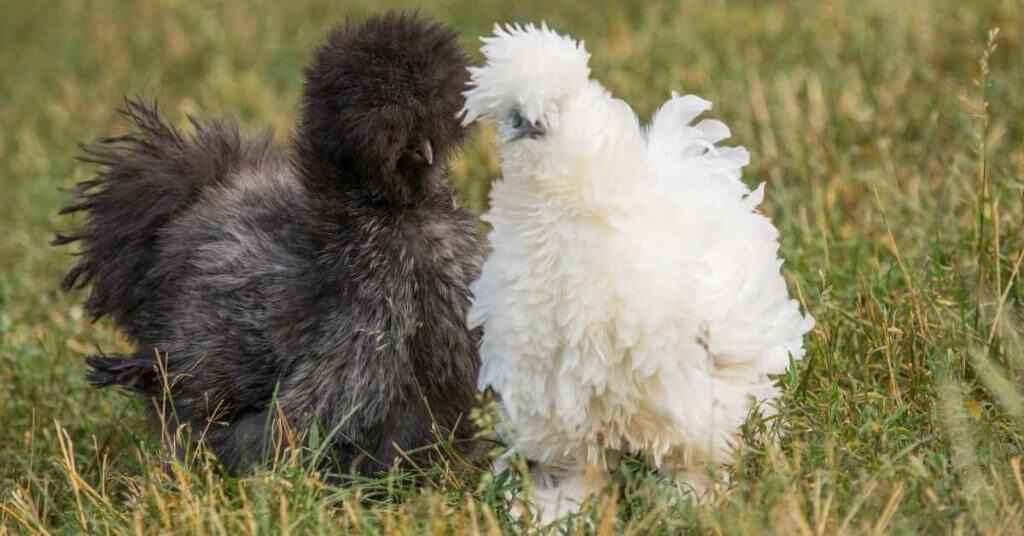
A Guide To Silkie Chickens (Having Learned The Hard Way)
A guide to Silkie chickens and everything you need to know about the breed before you buy.
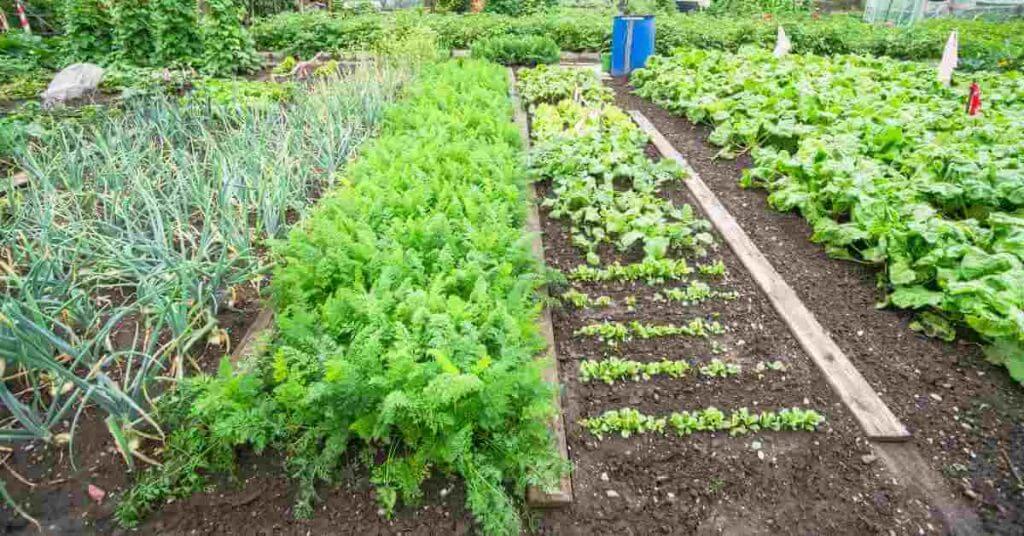
No Dig Gardening – A Beginner’s Guide
The ultimate guide to reap the benefits of no-dig gardening, complete with a step-by-step guide on building your own.
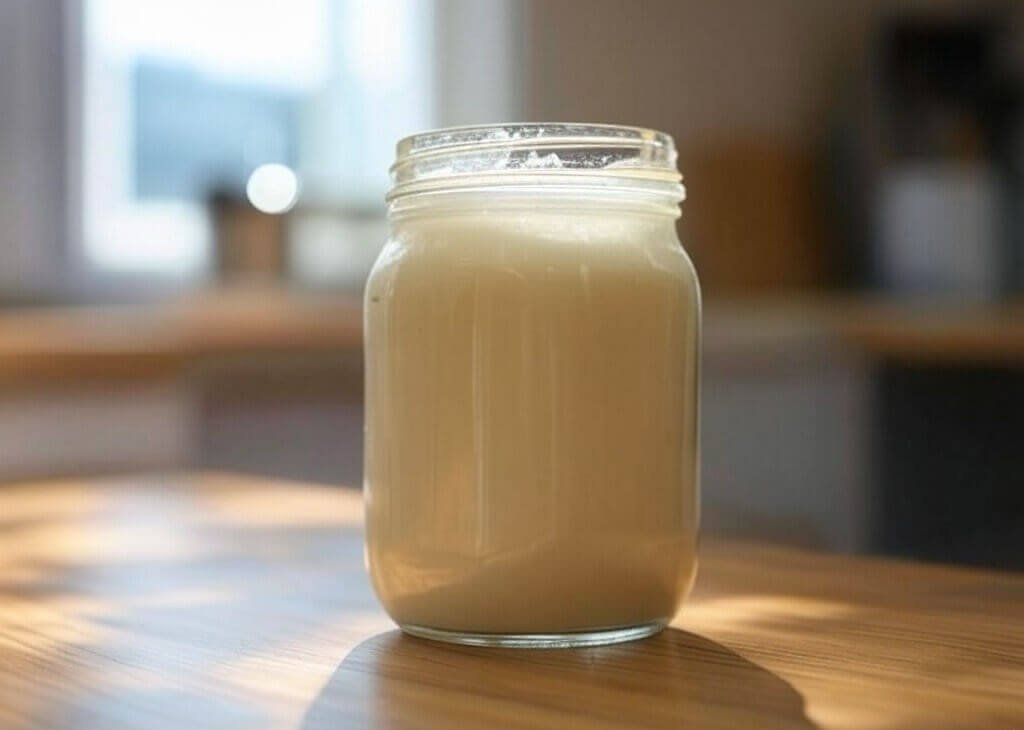
How To Make Beef Tallow: A Step-By-Step Guide
Learn how to make beef tallow at home with this step-by-step guide. Perfect for cooking and skincare, this method ensures pure, long-lasting tallow.

Tallow Vs Coconut Oil: Which Is Better For Your Skin?
With its superior fatty acid profile and vitamin content, it is clear that tallow proves better for your skin when it comes to tallow vs coconut oil.

The 5 Best Companion Plants For Peppers
Here are the 5 best companion plants for peppers that will deter pests, attract pollinators, increase fruit set and yield, and enable your peppers to thrive.